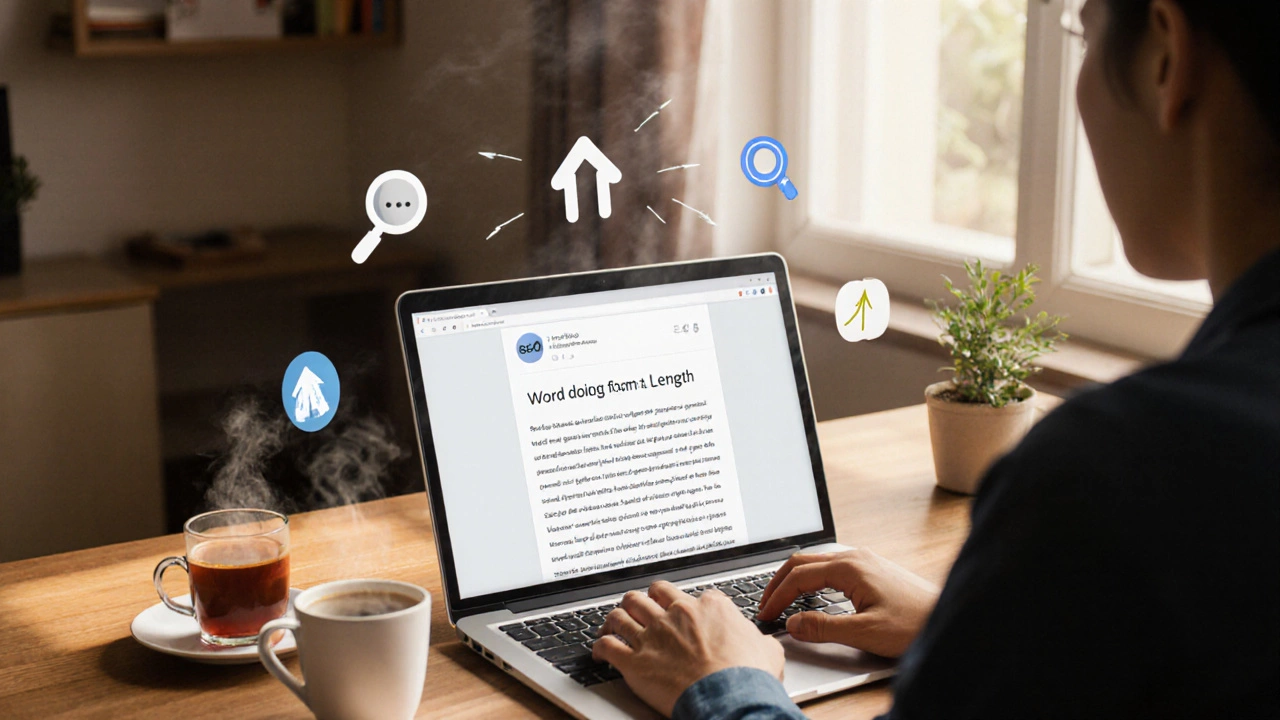Blog Post Length Calculator
Determine Your Ideal Length
Why Length Matters
The right word count boosts SEO, engagement, and conversion rates. Shorter posts work for quick tips while longer content builds authority.
Ever wondered why some articles rank high while others barely get a glance? One hidden factor is the blog post length. It’s not just a random number; the right word count can boost SEO, keep readers hooked, and increase shares. Below you’ll find a step‑by‑step guide to choosing the perfect length for any topic, platform, or audience.
What "blog post length" Really Means
Blog post length is a metric that measures the total word count of a published article, typically used to gauge depth, SEO value, and reader engagement. It isn’t a one‑size‑fits‑all rule-different goals demand different ranges.
Why Length Impacts Rankings and Readers
- SEO search engine optimization benefits from longer, comprehensive pieces because they naturally attract more backlinks and dwell time.
- Readability how easy a text is to skim or absorb can decline if you cram too much information without breaks.
- User intent the purpose behind a search query influences the ideal depth-someone looking for a quick tip needs less than someone researching a complex topic.
- Engagement metrics like scroll depth, comments, and social shares often rise when the content matches the reader’s expectations for length.
How to Choose the Right Length
Think of length as a tool, not a rule. Ask yourself these three questions before you start typing:
- What’s the primary goal? Are you aiming for quick traffic, lead generation, or authority building?
- Who is the audience? Novices usually prefer concise guides; experts appreciate deep dives.
- Where will the post live? Platforms like Medium favor shorter reads, while your own blog can host pillar pieces.
Answering these helps you land in one of the four length buckets outlined below.
Recommended Length Buckets
| Goal | Word‑count range | Why it works |
|---|---|---|
| Quick tip / How‑to | 300-600 | Delivers actionable steps without overwhelming the reader. |
| Standard blog post | 600-1,500 | Balances depth and readability, ideal for most SEO targets. |
| Long‑form guide | 1,500-2,500 | Provides comprehensive coverage, boosts dwell time and backlinks. |
| Pillar / Evergreen content | 2,500+ | Positions your site as an authority, often earns high‑quality links. |
Tips to Optimize Any Length
- Use headings and subheadings. They break the text into bite‑size sections and improve Readability.
- Add visual elements. Images, infographics, and short videos keep readers engaged regardless of word count.
- Include a clear call‑to‑action. Whether it’s a newsletter sign‑up or a product link, a CTA turns readers into leads.
- Focus on keyword relevance. Use Keyword research tools like Ahrefs or Ubersuggest to ensure your target terms appear naturally.
- Maintain a consistent tone. A friendly, conversational voice works well for both short and long posts.
Common Pitfalls and How to Avoid Them
Even seasoned bloggers slip up. Here are three “length” traps and quick fixes:
- Padding for the sake of word count. If a section feels repetitive, trim it. Quality always beats quantity.
- Neglecting SEO fundamentals. Long posts need proper Google algorithm cues: meta description, alt text, and internal links.
- Forgetting the audience. A 2,500‑word piece on basic budgeting will lose readers. Tailor depth to the identified persona.

Tools to Measure and Refine Length
These free or low‑cost tools can help you gauge whether your post hits the sweet spot:
- Yoast SEO (WordPress plugin). Shows optimal word count based on focus keyphrase.
- BuzzSumo. Reveals average length of top‑ranking articles for any keyword.
- Google Search Console. Monitors bounce rate and average time on page, hinting if content is too short or too long.
Putting It All Together: A Quick Checklist
- Define the primary goal (traffic, leads, authority).
- Identify audience expertise level.
- Choose a length bucket (300‑600, 600‑1,500, 1,500‑2,500, 2,500+).
- Structure with H2/H3 headings, bullet points, and images.
- Run SEO analysis before publishing.
Mini FAQ
Does a longer post always rank better?
Not automatically. Length helps when it adds value, but thin, padded content can hurt rankings. Focus on depth, relevance, and user intent.
How many words should a beginner’s blog post have?
Aim for 600‑1,200 words. That’s enough space to explain basics, add examples, and optimize for SEO without overwhelming a newcomer.
Can I split a 3,000‑word piece into multiple posts?
Yes. Breaking a massive guide into a series improves readability and gives you more chances to rank for related long‑tail keywords.
Do visual platforms like Medium favor shorter articles?
Generally, Medium readers gravitate toward 800‑1,200 words, especially when the piece includes compelling images and a strong narrative.
How often should I revisit the word count of existing posts?
Review high‑traffic posts every 6‑12 months. If analytics show high bounce rates, consider trimming; if they’re ranking well but lack depth, expand with fresh data.



